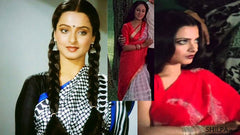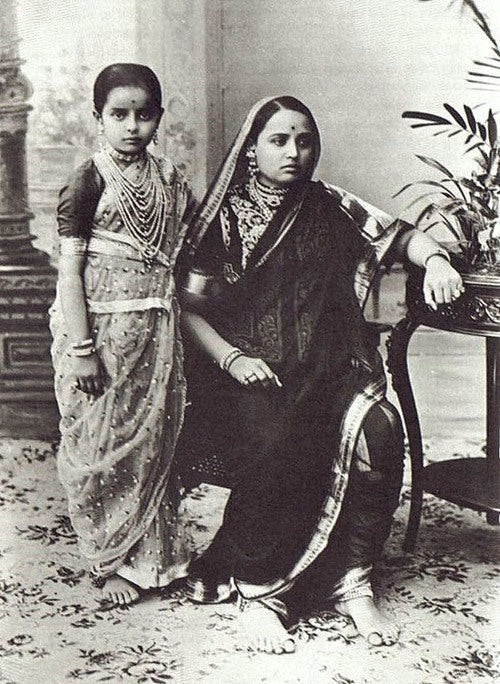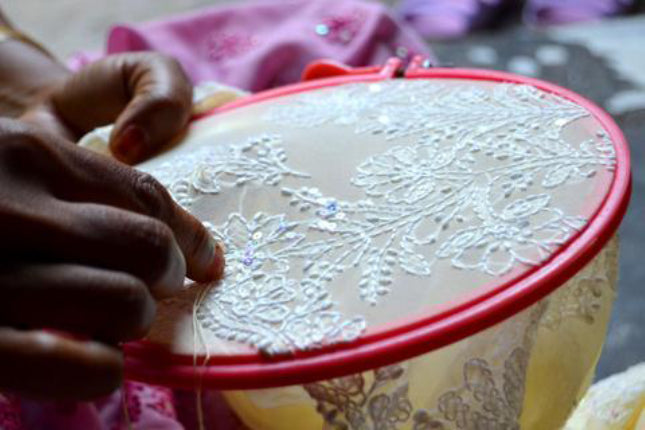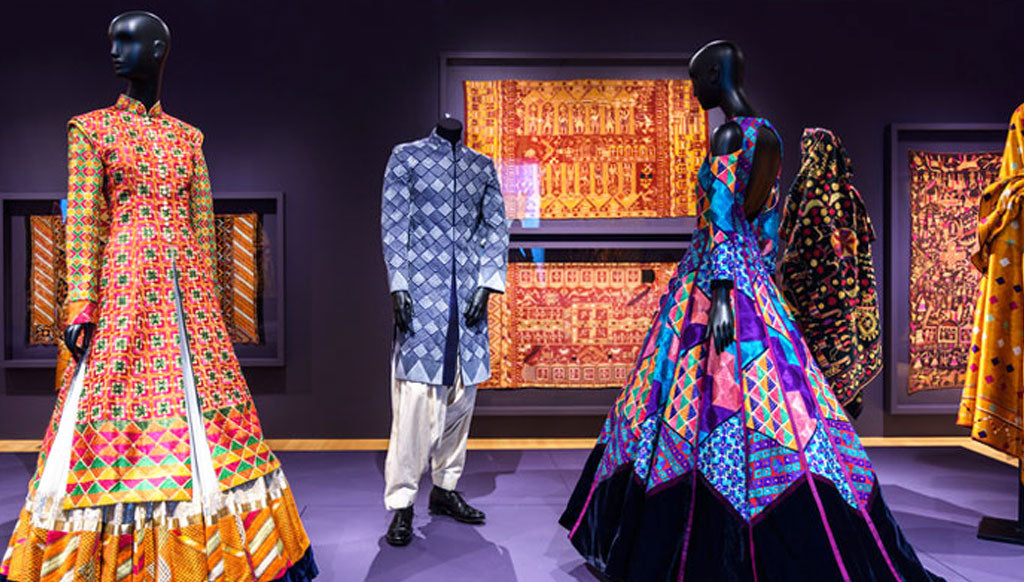A little bit of investigative research on fashion through the ages reveals that the saree is not merely yards of fabric or simply a garment worn by Indian women, it is a bond that connects Indian women's past to present and present to future.
While women in the western world asphyxiated themselves to look alluring, thanks to Catherine de Medici (this frustrated Queen of France banned thick waists, consequently forcing women to torture themselves with whalebones, steel cages, and tyrannical corsets) for centuries, women in the Indian sub-continent bore themselves as epitomes of beauty and grace, wrapped in the comfortable drapes of a saree.


Six yards of elegance and comfort. There is nothing more quintessentially Indian attire than a saree. The image of a woman draped in a saree is instantly relatable to India. A sari, saree or shari is a women's garment from the Indian subcontinent that consists of various drape arraying from five to nine yards (4.5 meters to 8 meters) in length and two to four feet (60 cm to 1.20 m).
With more than 5,000 years of existence, the Indian saree is considered to be among the oldest form of the garment in the world still worn. The Vedas – among the oldest literature – mention it, and records from the Indus Valley Civilization (3300–1300 B.C.E.) also indicate its usage at the time. Yet it being ancient has in no way impacted its popularity. Still ubiquitous – on-ramps at leading fashion shows, in Bollywood, on streets of rural and urban India, on hip college students and their conservative grandmothers – the saree is as entrenched in our culture as it ever was.


Sarees from the 1950s to 1970s
Post-Independence from the 1950s-1970s saw the emergence of Bollywood movies and along with it the influence of the beautiful starlets who graced the big screen. Sarees underwent some major experimentation with fabrics, patterns, weaves, and drapes. Most of which were adopted rather quickly by newly fashion conscious Indian women. Nutan, Madhubala, Nargis, and Mumtaz were all sporting different looks and for the first time ever, Indian women had the freedom to pick and choose their own individual style.




Sarees from the 1970s to 1980s
The 1970s-1980s brought with them the affordability of color televisions and with it, the saree once again went through yet another metamorphosis. Gone were the basic muted monotones of weaves and dark traditional colors as bold, flamboyant and colorful prints were the order of the day. Bollywood had found its footing and the industry was prospering as were those attached to it. Inspired by on-screen styles worn by actresses, companies like Vimal and Garden Vareli developed printed sarees that were easily accessible at different price points to all Indian women.


Sarees during the 1990s
Sarees went back to their original fluidity and sheerness in the 1990s solely because of the love stories of ace filmmaker Yash Chopra. The Yash Raj heroine was a sensuous chiffon saree clad angel who was the perfect balance of innocence and sex appeal. Indian women ditched their opaque printed sarees for these single colored fluid versions with just a hint of salaciousness.


Sarees from the 1990s to 2000s
By the mid-1990s and early 2000s, Indian women had really come into their own style element. It was the age of supermodels, Miss Universe, and Miss World winners and suddenly it became all important to be dressed in the creations of the most popular fashion designers. The subtly risqué chiffon saree gave way to the openly sexy net saree paired with equally revealing blouses. Indian women were making a beeline for anything fitness related to being able to confidently wear these utterly luscious sarees. The saree color palette was also the boldest it had ever been with women embracing everything from deep dark tones to eye-popping neons.


Sarees during the 2010s
Around the 2010s the world was truly globalized and most women couldn’t be bothered with the arduous task of neatly draping and pleating a saree. Indian fashion designers used their ingenuity to create pre-draped versions of the saree that could be worn as quickly as any of the western garments preferred by modern Indian women. Pleats became totally optional as sarees could also be worn without them as half and half versions that had contrasting pallus and skirts. In fact, the saree became the canvas for fusion wear like Lehenga-Sarees and Saree-Gowns to appease the discerning connoisseurs of Indian fashion who were now extremely well traveled, educated abroad and willing to spend on style.


No other dress defines the Indian woman as a sari does… whether a rich Kanchipuram or a simple cotton saree. So the next time you need to make a style statement, you know what to reach for. Wear those six yards of mystique with flamboyance!







